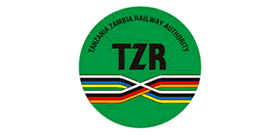 Tanzania’s Southern Rail Projects Set to Transform Regional Connectivity and Economic Prospects
Tanzania’s Southern Rail Projects Set to Transform Regional Connectivity and Economic Prospects
The momentum surrounding the revival of the TAZARA railway and the ambitious plans for the Southern Railway corridor (Mtwara–Mbamba Bay) is gathering pace, with top political leaders emphasizing their transformative potential for Tanzania’s Southern Highlands and adjoining regions. According to CCM Vice-Chairperson (Mainland) Stephen Wasira, these infrastructure projects are poised to become vital engines of economic growth and regional integration—a message that resonates strongly across Africa’s travel and logistics sectors.
TAZARA, the historic Tanzania-Zambia Railway Authority line, has long been seen as a strategic asset for cross-border trade and mobility, linking Tanzania’s central transport corridors to the wider Southern African region. Its proposed revival, coupled with the construction of the Southern Railway, signals a new era of investment that promises to unlock vast opportunities not only for freight and minerals but also for passenger movement and tourism development.
Wasira’s recent remarks, highlighted in national media, underscore the government’s view that rail infrastructure will be a primary catalyst for economic transformation in southern Tanzania. The Southern Railway, stretching from Mtwara to Mbamba Bay, is expected to open up remote areas, facilitate the flow of goods to and from the Indian Ocean port of Mtwara, and connect agricultural, mining, and tourism hubs along its route. For Africa’s travel industry, such connectivity is a game-changer, enabling new tour circuits, easier access to iconic destinations, and expanded opportunities for local communities.
The TAZARA route remains indispensable for regional integration. Its revitalization will not only bolster trade between Tanzania and Zambia but also strengthen logistical links reaching the Democratic Republic of Congo, Malawi, and beyond. For tour operators and hospitality providers, improved rail services mean greater comfort and reliability for travelers—whether exploring Tanzania’s southern game reserves, heading to Lake Nyasa, or embarking on cross-border adventures.
These rail projects also align with continental trends toward sustainable and inclusive infrastructure. Modernized rail lines can help reduce road congestion, lower transportation costs, and provide greener alternatives for mass transit. For African travel professionals, efficient rail systems offer a competitive edge, appealing to both business and leisure travelers seeking alternatives to air and road transport.
Moreover, the economic ripple effects are likely to be significant. Enhanced rail connectivity will stimulate investment in hotels, lodges, and supporting services, particularly in areas previously considered logistically challenging. The Southern Highlands, with their breathtaking scenery and rich cultural heritage, stand to benefit from new visitor flows—potentially elevating the region as a must-see destination on the African map.
The construction of the Southern Railway and the reinvigoration of TAZARA reflect a broader shift in Tanzania’s—and Africa’s—approach to infrastructure development. By prioritizing transport corridors that link productive sectors to markets, the government is laying the groundwork for diversified economic growth and greater regional self-sufficiency. For the travel trade, this means new products, more reliable itineraries, and expanded market reach.
As these projects advance, African travel businesses should monitor opportunities to partner with railway operators, develop rail-based tourism packages, and promote the unique experiences available in Tanzania’s southern regions. The integration of rail into the broader tourism ecosystem will be crucial for capturing the value of these investments and delivering benefits to both travelers and local communities.
With the support of political leaders and growing interest from international investors, the outlook for rail-driven transformation in Tanzania is brighter than ever. The coming years are set to witness a renaissance in regional mobility—one that could inspire similar projects across the continent and redefine the future of African travel and economic development.
